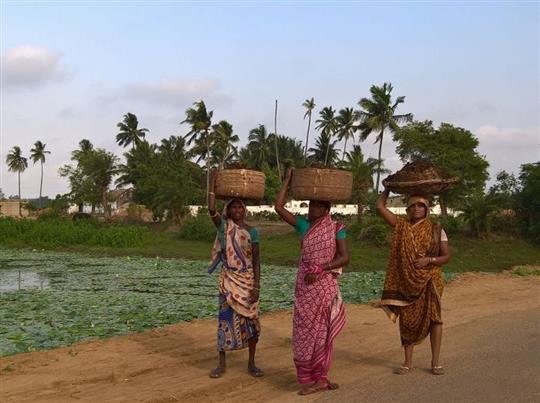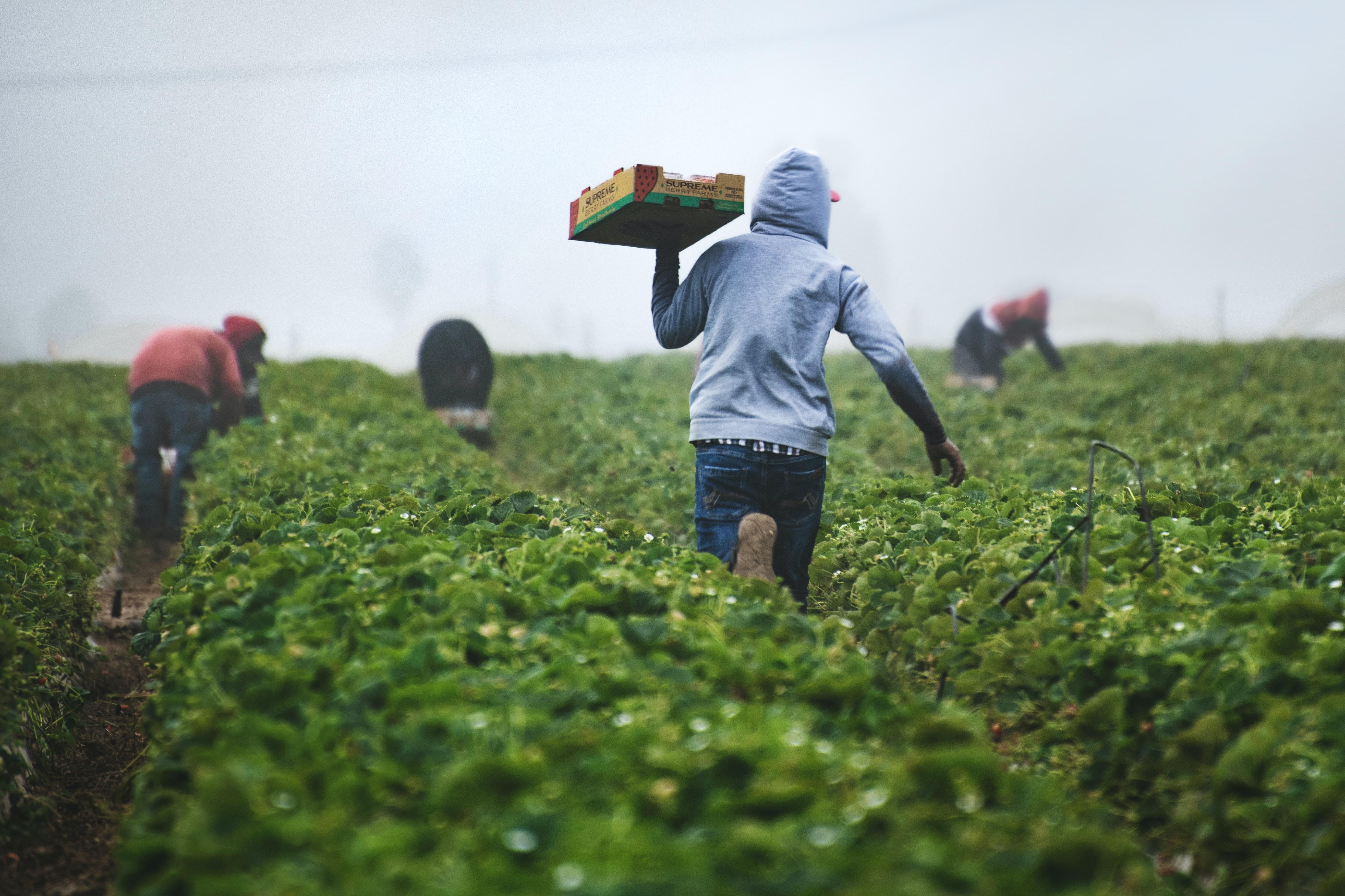While for most of the economically privileged class, seasonal changes bring variety in terms of food, living, clothes, or an opportunity for a vacation, many rural residents are vulnerable to seasonal changes and experience hunger, extreme poverty, and drudgery, especially during the lean season before agricultural harvests. In this note, I present a brief account from a participatory research project in the states of Bihar and Odisha that provides insights into the nuanced impact of seasonality on nutrition and livelihoods of the rural poor, especially women.

Photo credit: Ankita Mondal
The critical role of seasonality in food security, particularly in agrarian societies, is well-known. Seasonal hunger usually strikes during the wet season between sowing and harvesting of major crops when several adverse factors are at play simultaneously, including food scarcity, increased food prices, and depleted food stocks. In Odisha, a group of women corroborated that the rainy season is the “toughest”, due to unavailability and high prices of the vegetables in the market. Even for the few who have kitchen gardens vegetables weren’t mature enough to be plucked, since the growing period for these crops coincides with the cropping season. Further, cyclical occurrence of diseases like diarrhoea and skin infections during wet seasons adds to the challenge. Robert Chambers famously referred to this lean season as “the hungry season and the sick season”; “the time of year when poor people are at their poorest and most vulnerable to becoming poorer.”
Dealing with seasonal hunger
Our research shows that the burden of adjusting to the problems of seasonal hunger falls disproportionately on women. In response to seasonal hunger, many women compromise their own well-being in order to avoid compromising the well-being of other household members. This may have as much to do with following a set of established norms as a willingness to sacrifice themselves rather than asking their partners to jointly share the burden of seasonal hunger.
In order to cope with food scarcity, it is usually women, not men, who cut down on their daily food intake – in Jagathapalli (Ganjam, Odisha) while the women consumed four meals a day in other seasons, during summers and rains they restricted to two meals. The onus to compromise in the hardships of food scarcity falls usually on women, while they make sure men consume three meals a day, “throughout the year”. In the lean season, women’s typical diets includes roti (flatbread), sabzi (vegetables) and “achar” (pickle) in the evening and leftover rice from dinner in the morning. Considering the small portion sizes assigned to women, their food intake falls very short of their nutritional requirements. Even in times of dire food insecurity, social customs are maintained – women eat leftovers, after feeding the man of the house, followed by the children. In our study of about 255 households, few defied this custom.
Low availability of work during lean season
Finding a job in the lean season is difficult for both men and women. During the lean season spanning 2-3 months, which often coincides with the rainy season, agricultural labourers are hired for only about 15-20 days. During this window, for those who find work, workload typically increases as agricultural labourers are invested in preparing the land, and transplanting and sowing the crops. While usually in other seasons, women in Jagathapalli (Ganjam, Odisha) work from 8 am to 1 pm in the fields; during the rains, it extends until 3 or 4 pm. But the longer working hours do not fetch them much money; the wage rates decline drastically as families, who have exhausted their own stocks of food from the last harvest, flood the labour market. Although the increased work pressure leads to greater energy requirement of the body, with a daily wage as less as Rs. 50 per day, a nutritionally adequate diet is inconceivable.
In Jagathapalli (Ganjam, Odisha) cash constraint is a major issue during the summer and rainy season. In Amgachi (Araria, Bihar) the recent switch to harvesters has displaced labour, and work even during agricultural seasons is hard to come by. A woman from Amgachi remarked, “It is difficult to sit around without work and there is difficulty getting food.” With expenses on food and health increasing during the lean season, unemployment is devastating for many of these landless households. Lack of jobs in this season is not only confined to the agricultural labourer – masons from D. Berhampur (Ganjam, Odisha), working in nearby towns, are also jobless during the rains.
Non-food expenses shoot up during certain seasons
Furthermore, non-food expenses tend to shoot up during certain seasons. The people of Jagathapalli and D. Berhampur (Ganjam, Odisha), are most commonly affected by malaria, diarrhoea and skin infections during the summer and the rainy season immediately after, leading to additional medical expenses. Higher frequency of infections is also observed in September and October, after the rains and before winter, when almost everyone is down with a fever. In Sukhsena (Purnia, Bihar), summer is the time when most of them feel weak and dizzy while working outdoor in the scorching heat; low blood pressure is common during this time and people often contract chicken pox. In Aamgachi, winter diseases include fever (kala-azar) and typhoid, while diarrhoea is persistent in the summer and rainy season. As the body’s nutritional needs increase during illness, food insufficiency further aggravates the condition. Besides, men seem to have priority in accessing healthcare in case of illness.
Women in Orissa who can earn income selling fishes or leaf plates, or working as agricultural labourers, also often spend their hard-earned money on repairing or rebuilding their houses, which can be shattered by seasonal storms and heavy rain. A woman from D. Berhampur (Ganjam, Odisha), shared: “roof of my house was blown in heavy wind... we did not eat anything for one day.” However, quite often, women reported that men avoided these expenditures; money earned by men is dedicated towards their personal needs, including liquor and other addictions. Women take the responsibility to take care of the household needs even without a steady source of income. For a woman from D. Berhampur (Ganjam, Odisha), her small backyard is her lifeline during the lean seasons; she sells mangoes and guavas from her garden that serves her during the summer and rainy season. She is also one of the many women whose husbands are unwilling to contribute to household expenses. Nevertheless, she expressed, "In the rainy season, my husband is not getting work. During this period we face difficulty getting food.” She earns up to Rs. 150/day through labour work, whenever available, and sells green leafy vegetables in the market, that grow near the government water supply tank.
Coping strategies
The women we spoke to, across the villages we surveyed, were aware of the repercussions of seasonal variations, prompting them to adopt certain coping strategies. In Jagathapalli (Ganjam, Odisha), bauhinia (Caesalpiniaceae) leaves are dried in the summer and stored for consumption in the rains and winter. Similar practices are followed for tamarind, mango, jackfruit seeds, and papad. There are also certain foods that characterise specific seasons; people at D. Berhampur (Ganjam, Odisha) consume crabs during the rains due to its easy availability. Mushrooms are available till the rainy seasons, while potato and mustard leaves are popular in the winter. Whereas earlier they used to eat wild catch from the forests, with progressive loss of forest area, these don’t seem to be available any longer to help combat lean seasons.
In spite of being a recurring, predictable emergency, seasonal hunger continues to persist. Although women have been surviving their yearly battles with season hunger, it is often without the aid and support of their husbands. It is apparent that the role of the government, too, has remained insignificant in helping these women cope with the adverse effects of seasonality. The rural poor remain deprived of the urban conveniences of a market system that ensures food availability, affordability, and accessibility across all seasons. It is time for the government to adopt a more specific, tailor-made approach to address seasonal issues: this would include providing additional food assistance and work opportunities for both women and men, during lean seasons; establishing accessible market systems to ensure food availability across seasons; and maintaining common resources that support coping strategies. These measures would go a long way in unburdening women and reducing their vulnerability.

Contributed by Ankita Mondal, National Institute of Nutrition. This blog refers to fieldwork undertaken for an IMMANA-funded project The Women’s Empowerment in Nutrition Index (WENI): Measuring nutritional empowerment to better link agriculture to nutrition.
This blog is fourth in a series of five. The text first appeared in Ideas for India.






